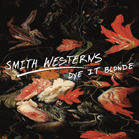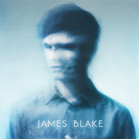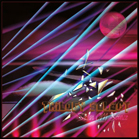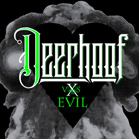Music Reviews, 02/2011
by James Brubaker and Joshua Cross
Joshua Cross
The Decemberists | The King Is Dead
Label: Capitol
 Early buzz around The King Is Dead, The Decemberists’ sixth studio full length, focused on the alt-country, Americana feel of the album, which should have come as no surprise given Colin Meloy’s history with Tarkio before forming The Decemberists. For many, this concept was a welcome relief after the prog-rock, rock-opera clusterfuck that was Hazards of Love. Unfortunately, most of The King Is Dead never fully commits to the alt-country sound. Songs like “Why We Fight” and “Dear Avery” sound as though they could have been plucked straight off The Crane Wife. “Calamity Song,” “Rox in the Box,” and “January Hymn” all sound like typical Decemberists songs, just with a little more twang and little less verbosity. While “Rise to Me” and “June Hymn” come closer, they ultimately sound like The Decemberists, but with a little pedal steel and harmonica thrown in for color. The most successful songs are those that commit to the alt-country persona most completely, including “Don’t Carry it All” and “All Arise!” But the most obvious standout on the album is the first single,” Down by the Water,” which sounds closest to the alt-country stompings R.E.M experimented with during a certain period. No wonder then that Peter Buck contributes some 12-string guitar plucking. Meanwhile, the vocals by Gillian Welch and David Rawlings provide a gritty feel that the rest of the album could have benefitted from. While we should applaud The Decemberists for their willingness to go in a different direction, the end result would have been entirely more effective had they committed to the concept and carried it off consistently.
Early buzz around The King Is Dead, The Decemberists’ sixth studio full length, focused on the alt-country, Americana feel of the album, which should have come as no surprise given Colin Meloy’s history with Tarkio before forming The Decemberists. For many, this concept was a welcome relief after the prog-rock, rock-opera clusterfuck that was Hazards of Love. Unfortunately, most of The King Is Dead never fully commits to the alt-country sound. Songs like “Why We Fight” and “Dear Avery” sound as though they could have been plucked straight off The Crane Wife. “Calamity Song,” “Rox in the Box,” and “January Hymn” all sound like typical Decemberists songs, just with a little more twang and little less verbosity. While “Rise to Me” and “June Hymn” come closer, they ultimately sound like The Decemberists, but with a little pedal steel and harmonica thrown in for color. The most successful songs are those that commit to the alt-country persona most completely, including “Don’t Carry it All” and “All Arise!” But the most obvious standout on the album is the first single,” Down by the Water,” which sounds closest to the alt-country stompings R.E.M experimented with during a certain period. No wonder then that Peter Buck contributes some 12-string guitar plucking. Meanwhile, the vocals by Gillian Welch and David Rawlings provide a gritty feel that the rest of the album could have benefitted from. While we should applaud The Decemberists for their willingness to go in a different direction, the end result would have been entirely more effective had they committed to the concept and carried it off consistently.
Iron & Wine | iss Each Other Clean
Label: Warner Bros.
 In the interest of full disclosure: Iron & Wine is one of my favorite contemporary bands.
In the interest of full disclosure: Iron & Wine is one of my favorite contemporary bands.
In the interest of full disclosure: The Shepherd’s Dog is their best full length album, in my opinion, but I disliked the record at first. It took a few months before the songs grew on me. Once they did, I was hooked.
Those statements of bias withstanding, I feel incapable of reviewing Kiss Each Other Clean objectively. Even my subjective opinion of the album is likely to change a few months from now. So all I can do is tell you what I think at the moment. And at the moment I’m underwhelmed.
I went into Kiss Each Other Clean with high expectations, especially after watching the full band perform the album live on an NPR webcast. While the live arrangements of the songs came across beautiful, thoughtful, and exhilarating, those factors were lost in the studio arrangements, replaced instead by distracting beeps and boops and whirrs and wooshes. Again, this is subjective, but I don’t think an album’s production should draw attention to itself. On Kiss Each Other Clean, the production not only draws attention to itself, but it draws attention away from the songwriting and the performances, masking and concealing much of the vocals and instrumentation. While I think there are several great songs on the album, what I hear most is Sam Beam, eschewing his signature whispery falsetto, singing over fuzzy, unfocused sound, and that’s not what I’m after when I turn to Iron & Wine.
Smith Westerns | Dye It Blonde
Label: Fat Possum
 There’s a lot of hype surrounding the Smith Westerns and their second full length, Dye It Blonde. On first listen, I could understand the hype, and I could see the potential for this group of Chicago youngsters. But after several listens, I’m still not entirely sure what to make of this record. The melodies are catchy and the arrangements are tight. The songs are fun and thoughtful. There’s some Beatles influence, there’s some Bowie, there’s some 90s Brit pop. Songs like “All Die Young” and “Imagine, pt. 3” stand out from the pack and have the potential for a lot of college radio airplay. But ultimately, I don’t see enough in this album to make it stand heads above the indie slush. This is a solid record by a young band with a lot of potential, but I don’t see it being an album I reach for five years down the road, or even five months from now. In the age of instant communication, short shelf lives, and attention deficits, perhaps staying power is no longer the criteria by which we should judge music. If that’s the case, then this is a good album for now-people, but by no means a contemporary classic.
There’s a lot of hype surrounding the Smith Westerns and their second full length, Dye It Blonde. On first listen, I could understand the hype, and I could see the potential for this group of Chicago youngsters. But after several listens, I’m still not entirely sure what to make of this record. The melodies are catchy and the arrangements are tight. The songs are fun and thoughtful. There’s some Beatles influence, there’s some Bowie, there’s some 90s Brit pop. Songs like “All Die Young” and “Imagine, pt. 3” stand out from the pack and have the potential for a lot of college radio airplay. But ultimately, I don’t see enough in this album to make it stand heads above the indie slush. This is a solid record by a young band with a lot of potential, but I don’t see it being an album I reach for five years down the road, or even five months from now. In the age of instant communication, short shelf lives, and attention deficits, perhaps staying power is no longer the criteria by which we should judge music. If that’s the case, then this is a good album for now-people, but by no means a contemporary classic.
James Brubaker
James Blake | James Blake
Label: A&M/Atlas
 In 2010, James Blake made his presence know with three exceptional EP’s. His songs were a little bit glitchy, a little bit melodic, and a little bit haunted, each piece an oddly quiet mixture of dance and headphone music. As oddly quiet as Blake’s work got in 2010, none of it really prepared us for Blake’s self-titled full length. On James Blake, Blake pushes his minimalist impulses to surprising extremes resulting in a delicate, ruminative album that manages to sound both modern and timeless.
In 2010, James Blake made his presence know with three exceptional EP’s. His songs were a little bit glitchy, a little bit melodic, and a little bit haunted, each piece an oddly quiet mixture of dance and headphone music. As oddly quiet as Blake’s work got in 2010, none of it really prepared us for Blake’s self-titled full length. On James Blake, Blake pushes his minimalist impulses to surprising extremes resulting in a delicate, ruminative album that manages to sound both modern and timeless.
One of the more interesting trends in pop music of the last few years is the ever-increasing presence of the explicit meeting between technology and natural performance. Blake’s compositions subtly push this relationship into engaging new territory—the beats and keyboards are sharp and crisp, the vocals, at times drip with effects but often come through in a pure, untouched warble, all over simple sounding arrangements that find movement out of subtle shifts rather than grand gestures. While a first listen might give the impression that not much is happening in these songs, it is the surface-level simplicity of Blake’s arrangements that ultimately provide the album with its backbone. Many of the songs revolve around a single, repeated lyrical line that provides structure as beats melt into walls of keyboards, or barebones piano chords give way to click tracks. “I Never Learnt to Share” opens with Blake’s lone voice, then adds countermelodies, then keyboards that slowly crescendo into a pulsing wall of inorganic tones. This song’s climax is starkly contrasted by its follow-up, “Lindesfarne I” which consists solely of Blake singing through heavy effects.
These types of moves make the album feel heavy. That Blake’s voice is surprisingly expressive only contributes to the overall weight. Ultimately, James Blake is an album that resonates deeply because of its deceiving simplicity and directness. The album’s repetition and subtly shifting arrangements make these compositions feel more like cyborg spirituals or post-human prayers than pop songs. And while these are, at their core, pop songs, Blake’s uncommon restraint and wise production choices make this one of the most soulful and intelligent pop records to come around in some time. The album’s directness may have been a surprise on the heels of his more opaque EP’s, but it is the directness that allows James Blake to transcend notions of genre and quickly cement itself as a landmark of electronic pop music. Critics and fans had high hopes for James Blake coming in to 2011, but I’m not sure any of them were expecting the twenty-two year old to release an instant-classic that manages to sound both like the future of pop music, and utterly timeless.
Stellar OM Source | Trilogy Select
Label: Olde English Spelling Bee
 I have a soft spot in my heart for Disney’s Epcot Center. I know that such a soft spot is achingly uncool, but I have it, and it’s mine. I remember going to Epcot as a small child and being in awe of the already—just a year or two after opening—dated depictions of the future. I’m not sure how or why Epcot center was a retro-futurist artifact from the moment it opened, but it was. The futuristic designs were a little more Star Trek than anything realistic, and the music that played on the rides was a beautiful mess of keyboards and whooshing, synthesized sound effects that were maybe supposed to sound like space, or something.
I have a soft spot in my heart for Disney’s Epcot Center. I know that such a soft spot is achingly uncool, but I have it, and it’s mine. I remember going to Epcot as a small child and being in awe of the already—just a year or two after opening—dated depictions of the future. I’m not sure how or why Epcot center was a retro-futurist artifact from the moment it opened, but it was. The futuristic designs were a little more Star Trek than anything realistic, and the music that played on the rides was a beautiful mess of keyboards and whooshing, synthesized sound effects that were maybe supposed to sound like space, or something.
Listening to Stellar OM Source’s Trilogy Select, a collection of songs culled from three of the “band’s” previous releases, I can’t help but think of Disney’s failed retro-futurist utopia (I say failed because, eventually, most of those classic rides and textures have been phased out in favor of more contemporary, science and capital driven attractions). So what is Trilogy Select exactly? It’s a highlight reel lovingly compiled by Christelle Gualdi, pulling together some of the best moments from three of her previous releases. Each of those albums is worth the time and energy to seek out on their own, but it is difficult to argue with Trilogy Select as it is a thoughtful, well-constructed compilation of those album’s finest moments. The songs themselves are stunning dystopic new age compositions. Lest the new age tag frighten anyone, think of these songs as the dark counterpoint to touchy-feely Borders-style new age—instead of listening to these songs to relax and feel at peace and think “groovy” thoughts, Gualdi’s compositions open up dark spaces in haunted terrains. “Rites of Fusion,” a collaboration with Oneohtrix Point Never, could be the soundtrack for distant, populated planets slipping out of their orbits and spinning into suns with space’s empty indifference as the only witness. Even a more upbeat number like the oceanic “Island Best,” feels restless and searching—its ethereal tones and sounds like crashing waves provide a backdrop for wildly uneasy keyboard explorations. If this is new age, it’s new age for fucked up people.
Stellar OM Source’s retro-futurism is a bold and engaging listen. While Trilogy Select might not be as focused as we might have hoped for, Gualdi’s compositions are full of life and chaos, neither of which are easy to produce in the icy realm of synthesizers and sci-fi soundscapes. And of course, despite the lack of beats or anything that could be construed as rhythmic, the album pulses with the desire of dulled expectations and crashed dreams. The landscapes Gualdi’s songs invoke aren’t magical or futuristic, they’re barren and decaying. None of this, of course, keeps Trilogy Select from being a beautiful album.
Deerhoof | Deerhoof vs. Evil
Label: Polyvinyl
 Deerhoof has long been a tough band to pin down. Over seventeen years, the band has managed to put out a string of largely great albums that critics and fans get excited about, and then kind of forget. Even near-masterpieces like Reveille and Apple O’, while receiving plenty of attention when indie rags were making up year-end lists in their respective years of release, struggled to get attention when everybody’s big ol’ decade lists started rolling out last year. With a résumé of startling consistency, featuring standouts as potent as the previously mentioned albums along with The Runners Four and Friend Opportunity, one would think Deerhoof would be a bigger part of the conversation for best bands currently making music.
Deerhoof has long been a tough band to pin down. Over seventeen years, the band has managed to put out a string of largely great albums that critics and fans get excited about, and then kind of forget. Even near-masterpieces like Reveille and Apple O’, while receiving plenty of attention when indie rags were making up year-end lists in their respective years of release, struggled to get attention when everybody’s big ol’ decade lists started rolling out last year. With a résumé of startling consistency, featuring standouts as potent as the previously mentioned albums along with The Runners Four and Friend Opportunity, one would think Deerhoof would be a bigger part of the conversation for best bands currently making music.
But something keeps people at arm’s length. Perhaps it’s the knowing quirkiness, the often-times overt inaccessibility, or the simple fact that the band’s catalog is so consistently weird but good that even the standouts don’t standout that much. With Deerhoof vs. Evil, I’d like to think that the ‘Hooves have finally put together an album that will resonate a bit longer than what’s come before. Or maybe that’s just wishful thinking. This album does have the right pieces to last—the songs are a bit more accessible, without sacrificing the band’s signature weirdness; the album’s scope seems a little broader, drawing on a wider array of textures as well as bigger hooks; but perhaps more importantly, Deerhoof vs. Evil manages a particular warmth that is sometimes lacking from Deerhoof’s songs. We hear a fine example of this in the playfully titled “Super Duper Rescue Heads!” which finds Satomi Matsuzaki earnestly singing, “You to the rescue/Alone, Alone/I’ll never be alone.” Such a simple sentiment goes a long way towards turning the song’s short-attention span bounce between goofy pop and crunching power-chords into something resembling a straight-forward anthem celebrating solidarity and basic human connection.
And maybe that’s why Deerhoof vs. Evil feels like such a big gesture from the band—the title and the abysmal album cover point toward an epic sweep, but instead we get some of the most thoroughly grounded and plainly human songs of Deerhoof’s career. By going bigger and bolder, Deerhoof have turned their attention inward, allowing moments like the wistful classical guitar and harpsichord of “No One Asked to Dance,” to mesh with the more traditionally disjointed guitar (un)funk of “The Merry Barracks,” to build an album that feels like it, at the least, stands with the band’s best.
Destroyer | Kaputt
Label: Merge
 In 2008, Destroyer’s Trouble in Dreams was a pretty good album with a lot of twists and turns and some utterly exciting lyrics. Despite that album’s strengths, though, the whole exercise never quite meshed. The end result felt too cluttered to the point of almost seeming unmusical. I don’t really know how Dan Bejar felt about the album, but from the drastic stylistic shift of Kaputt, I’d wager a guess that he, too, might have sensed that something wasn’t quite right.
In 2008, Destroyer’s Trouble in Dreams was a pretty good album with a lot of twists and turns and some utterly exciting lyrics. Despite that album’s strengths, though, the whole exercise never quite meshed. The end result felt too cluttered to the point of almost seeming unmusical. I don’t really know how Dan Bejar felt about the album, but from the drastic stylistic shift of Kaputt, I’d wager a guess that he, too, might have sensed that something wasn’t quite right.
So what makes Kaputt such a surprise? Gone are the low key tracks of Bejar and his acoustic guitar, as well as the wildly adventurous song structures and well-wrought to overwrought lyrics. In their place, Bejar has put together a surprising collection of 80’s MOR-sounding Yacht Rock loaded with lite-jazz saxophones and trumpets, and more chilled keyboard textures than you can shake a bag of coke at. Perhaps the most striking aspect of Bejar’s retro-pop is that he has entered into these songs seemingly void of any irony whatsoever. These aren’t songs that hip kids in head bands and leg warmers will want to dance to. These are songs that, were it not for Bejar’s smart lyrics and at times challenging themes, I wouldn’t be surprised to hear piped into a dentist office’s waiting room, or playing on that “Warm Sounds of the 70’s and 80’s” radio station that always seems to be playing in thrift stores and your friends’ parents’ cars.
Despite the complete lack of irony, however, Bejar manages to turn these songs into explorations of excess and longing. In a way, as great novelists root their narratives in times and places that will resonate thematically with their characters’ struggles, Bejar has used this lite-rock sound as the setting for his restless, searching characters. Be it the decadent jet setter “wasting [his] days chasing some girls, alright/chasing cocaine through the backrooms of the world all night,” in the album’s title track, or the down and out speaker of “Bay of Pigs (Detail)” who “took a walk and threw-up in an English garden,” Bejar’s characters possess a rare and raw immediacy that makes them bigger than just bodies to fill these cool-pop landscapes. And while Bejar never passes judgment on his character, thematically speaking we can’t help but consider critiques of artifice and excess as a result of the juxtaposition of the characters with the aural setting. In essence, the arrangements free Bejar’s characters free-reign to do as they please while the music itself encourages us to consider them as desperately sad and, at times, oddly tragic.
While Kaputt doesn’t quite feel like the kind of an album one might expect from Destroyer, it might be Bejar’s best. Without sacrificing any of what has made Bejar’s best work so strong, the songs on Kaputt are tighter, sharper, and more consistently engaging than previous Destroyer albums. Kaputt certainly isn’t representative of Bejar’s work as a whole, and I suspect some long term Bejar fans might jump ship on this release, but the loss will be all theirs. With Kaputt, Bejar has crafted the most surprising and engaging record of an already long and celebrated career.
